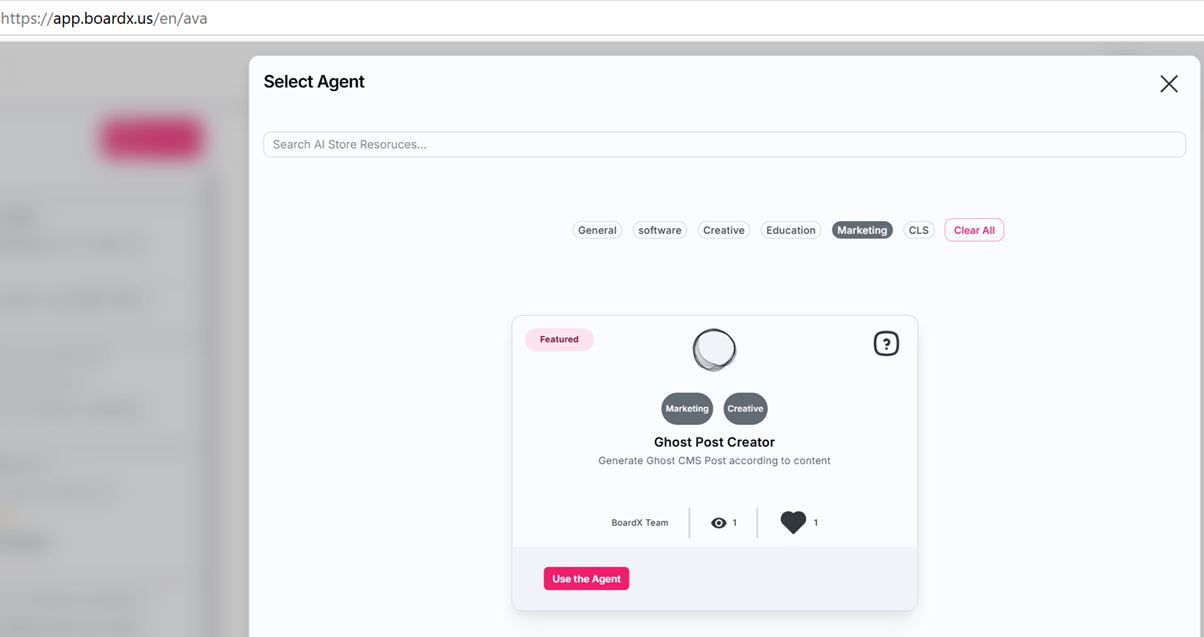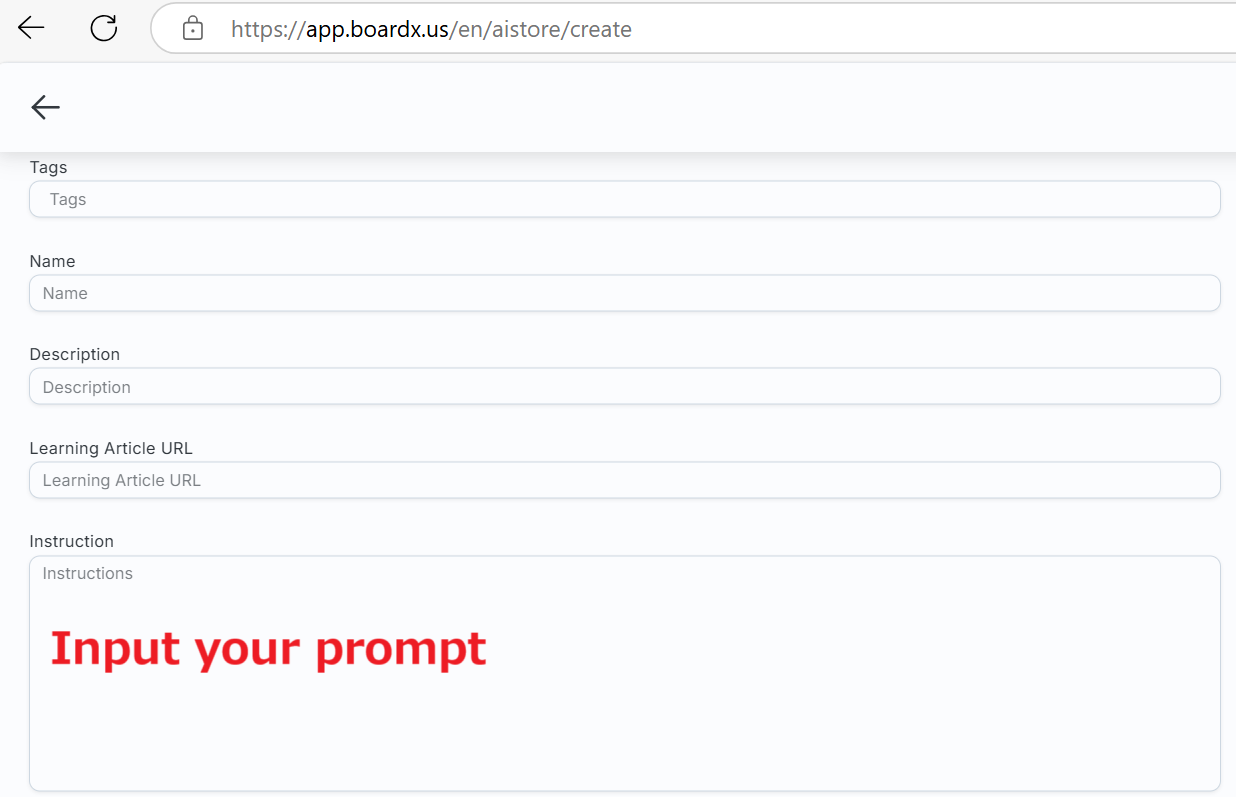2. Effortlessly Generate Perfect Markdown-Formatted Ghost Articles

Introduction
When writing Ghost blog posts, using Markdown can enhance the visual appeal of your content and improve formatting efficiency. By crafting well-structured AI prompts, creators can make AI generate content with rich formatting such as headings, lists, bold text, and quotes.
Below is a specific prompt example that combines techniques like chain of thought and role-playing to guide AI in generating Ghost articles that meet Markdown standards.
Example Prompt:
Role-Playing Prompt:
Assume the role of an experienced Ghost blogger and write a blog post titled "Five Practical Tips to Boost Work Efficiency" for your readers.Chain of Thought Prompt:
Start with a broad overview of the importance of improving efficiency; then, list five tips in the main body and explain the application scenarios and advantages for each. Include specific examples for each tip and conclude with the core points of the article.Markdown Details Requirement:
- Begin with "# Five Practical Tips to Boost Work Efficiency" as the main title.
- Use H2 (
##) headings to create separate sections for each tip and H3 (###) headings to explain the sub-steps or application scenarios of each tip.- Highlight key points of each tip using bold format (
**key point**).- Appropriately include unordered (
*) and ordered (1. 2. 3.) lists in the main text to present different steps and advantages.- Use Markdown quote format (
> quoted content) when citing famous quotes or authoritative data.- Include a concluding section with links using Markdown link format
[link text](URL).Paragraph Requirement: Each paragraph should not exceed 150 words to ensure clarity; separate each paragraph with a blank line for a clear structure.
With this detailed prompt, AI can generate a well-structured and clearly formatted Markdown article.
Section 1: Understanding Markdown Basics for Ghost
Before writing AI prompts, it is crucial to understand the basics of Markdown. Markdown is a lightweight markup language that can format content with simple symbols, making it particularly suitable for platforms like Ghost. Here are some common Markdown elements and their application scenarios in prompts:
- Headings: Used to display content hierarchy. Prompt example: "Use H2 headings for each section, and H3 headings to showcase subtopics."
- Bold and Italics: Use
**bold**to emphasize keywords. Prompt example: "Use bold format to emphasize the core concepts of each paragraph." - Lists: Use
*or1.to create unordered and ordered lists. Prompt example: "List at least three practical steps, using an unordered list format to display." - Quotes and Code Blocks: Use
>to generate quotes. Prompt example: "Quote industry expert opinions using quote format."
Understanding these basic syntax elements can help us better write prompts for AI to generate content that conforms to Markdown formatting.
Section 2: Writing Effective Prompts for AI to Generate Markdown Content
Writing effective AI prompts that clearly express Markdown format requirements is key. Here, we introduce some prompt techniques to help AI generate structured content.
- Chain of Thought Prompts: Guide AI step-by-step to generate article content. For example:
"First, generate a brief introduction to 'the importance of sustainable development,' then list five specific action steps. Each step begins with an H2 heading and includes an H3 subheading to introduce relevant data."
- Refine Markdown Needs: Specify each Markdown element clearly in the prompt. For example:
"Use H2 headings at the beginning of each section, bold keywords in each paragraph, and use quote format to cite data after each step."
- Role-Playing Prompts: Have AI write content in the role of an expert to enhance credibility. For example:
"Adopt the role of an environmental protection expert and write an article on 'daily environmental protection tips.' First, briefly introduce the background, then list five tips, each supported by data."
Using these prompt techniques ensures AI generates content that meets the expected Markdown format and content requirements.
Section 3: Designing Prompt Structures for Different Content Types
AI-generated content can include different structures, such as lists, headings, quotes, etc. Below are specific prompt designs for these structures:
- Lists and Headings: Prompt AI to generate content with lists and hierarchical structures. For example:
"Write an article containing five efficiency tips, with each tip title in H2 format and each step displayed in an unordered list."
- Quotes and Highlights: Write prompts for quoting and highlighting specific text. For example:
"Begin each tip with a relevant quote displayed in quote format (
> quoted content); highlight key conclusions in the final summary using bold format." - Inline Code and Links: Include code snippets and links in the article. For example:
"Demonstrate simple code examples in the article using inline code format (
code example). Include external links in the last section using[link text](URL)format."
These detailed prompt designs help AI precisely apply various Markdown elements when generating content.
Section 4: Creating Consistent Markdown Format in AI-Generated Content
Consistent content structure enhances the readability of articles. To achieve this, we can design prompts to ensure consistent Markdown format generation.
- Define Content Outline: Prompt AI to generate an outline before generating content. For example:
"First, generate an outline for an article on 'increasing work efficiency,' including the main title and H2 headings for each section. Then generate content for each section title, not exceeding 150 words each."
- Specify Heading Hierarchy and Paragraph Format: Clearly define heading and paragraph requirements. For example:
"The main title of the article should be in H1 format, each section with H2 headings, and each tip with H3 headings. The body content should not exceed 150 words, with paragraphs separated by blank lines."
These prompts guide AI to generate consistently formatted content, enhancing the professionalism of Ghost articles.
Section 5: Advanced Prompt Techniques for Custom Markdown Formats
If you need more complex Markdown formats, try these advanced prompt techniques.
- Generate Code Blocks and Syntax Highlighting: Suitable for technical articles. For example:
"Write an article on 'how to use Python for data analysis,' including code blocks enclosed by triple backticks and highlighting key code segments."
- Generate Superscript/Subscript and Multi-Level Quotes: Suitable for academic or research articles. For example:
"Use superscript format to mark important term numbers (^1) in the text, and include references using quote format at the end."
These advanced prompts allow AI to generate content closely aligned with specific content needs, enhancing Markdown typesetting.
Section 6: Testing and Improving Prompts for Optimal Output
When writing prompts, you can optimize AI-generated Markdown format through continuous testing and improvement.
- Iterative Prompt Testing: Adjust prompts if initial results are unsatisfactory. For example:
"If AI-generated content doesn't use bold, re-edit the prompt to specify bold content clearly."
- Include Examples in Prompts: Provide specific examples to help AI understand. For example:
"Include example formats in the prompt, such as
* unordered list exampleor> quote example, to help AI understand Markdown format."
Through repeated testing and optimization, you can gradually achieve AI-generated content that meets Markdown standards.
Section 7: Common Issues and Avoidance Methods
Understanding and avoiding common problems when writing prompts can improve the accuracy of generated content.
- Avoid Vague Prompts: Prompts should not be overly abstract; clearly specify Markdown needs. For example, "formatted text" is too vague; a specific description like "bold keywords at the beginning of each paragraph" is better.
- Avoid Overloading Prompts: Try to include only a few requirements at a time. For example, "generate an outline and fill in the main content" is easier to control than requiring a complete long text.
Section 8: Final Tips for Ghost Creators
Here are some final tips for Ghost creators:
- Try Different Prompt Lengths and Details: Adjust the level of detail in prompts according to needs.
- Build a Prompt Template Library: Save successful prompts as templates for quick application in the future.
Try using BoardX's Agent to help you create a post
In Chat, you can select the preset Agent for Ghost article drafts

You can also create a custom Agent from the left navigation under Store--Create

Combining Markdown format with AI prompts can effortlessly bring a professional glow to your Ghost articles! But remember, the real secret lies in trying and exploring. Don't be afraid to tweak your prompts repeatedly; each adjustment is a step toward more perfect output. Like fine-tuning a unique recipe, the more precise your prompts, the closer AI-generated content will be to your expectations. Just go ahead and experiment—in continuous attempts, you'll discover more and more inspiration and surprises, potentially creating a unique content style!

Comments ()